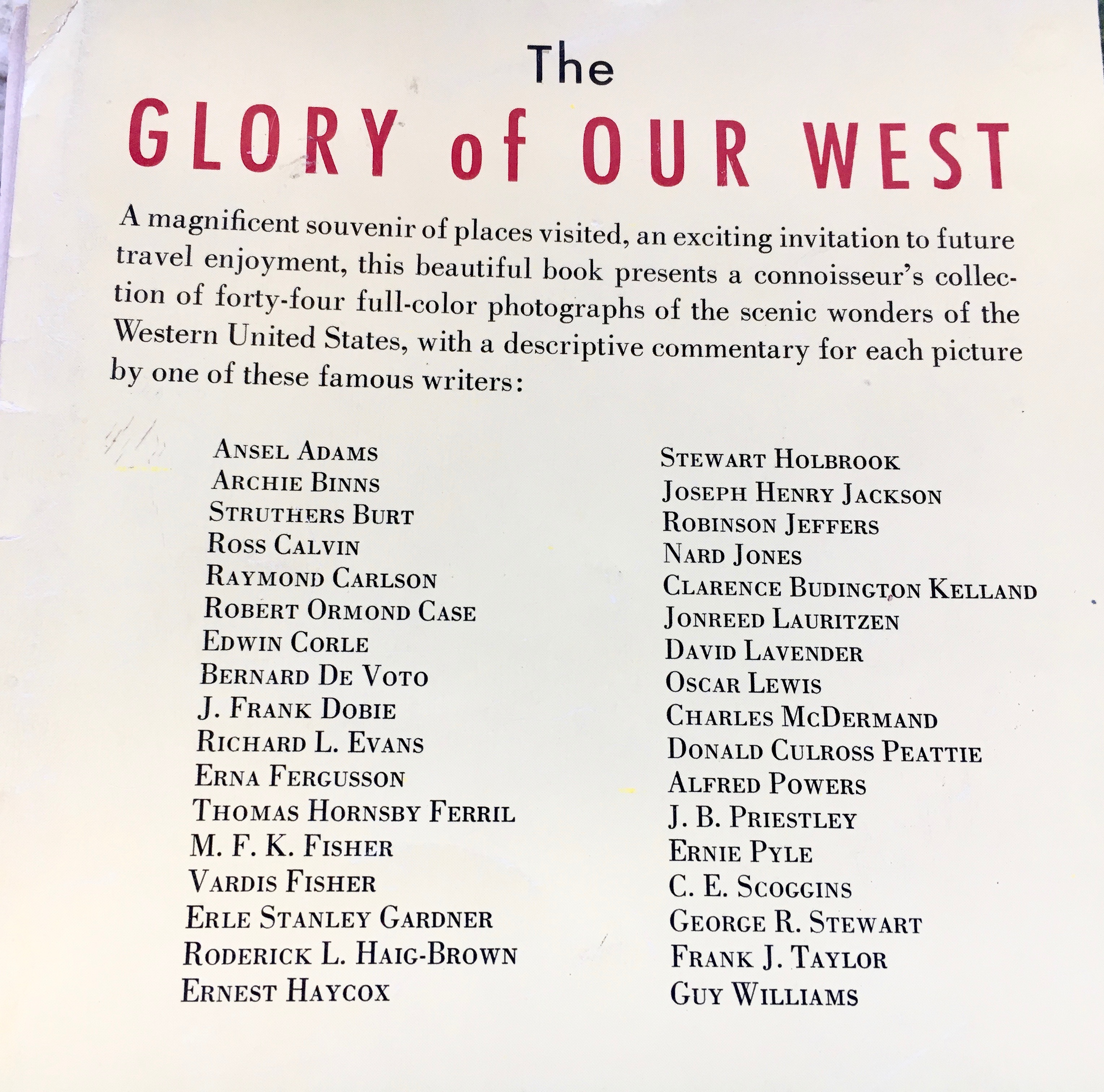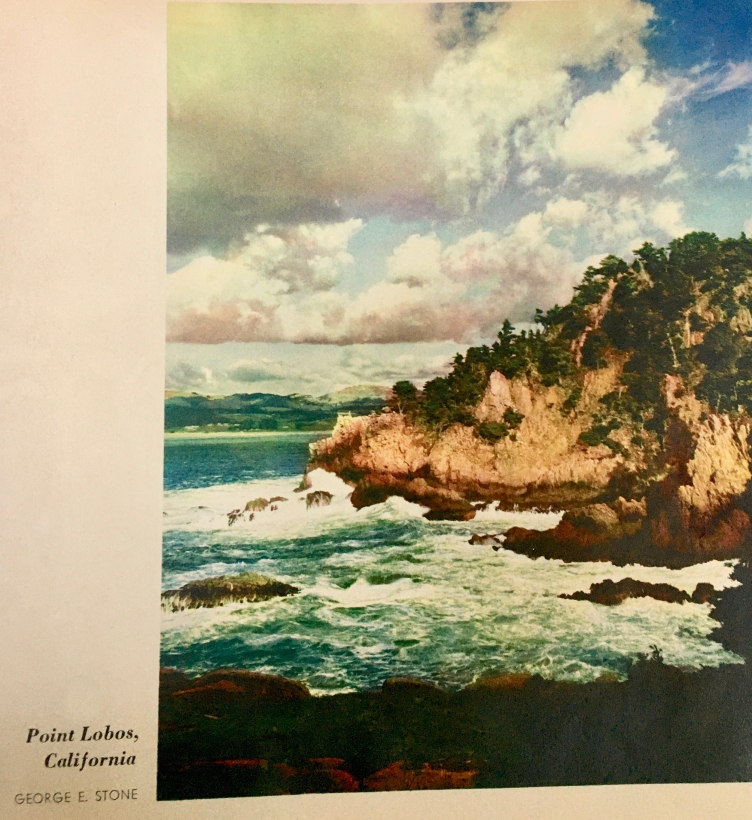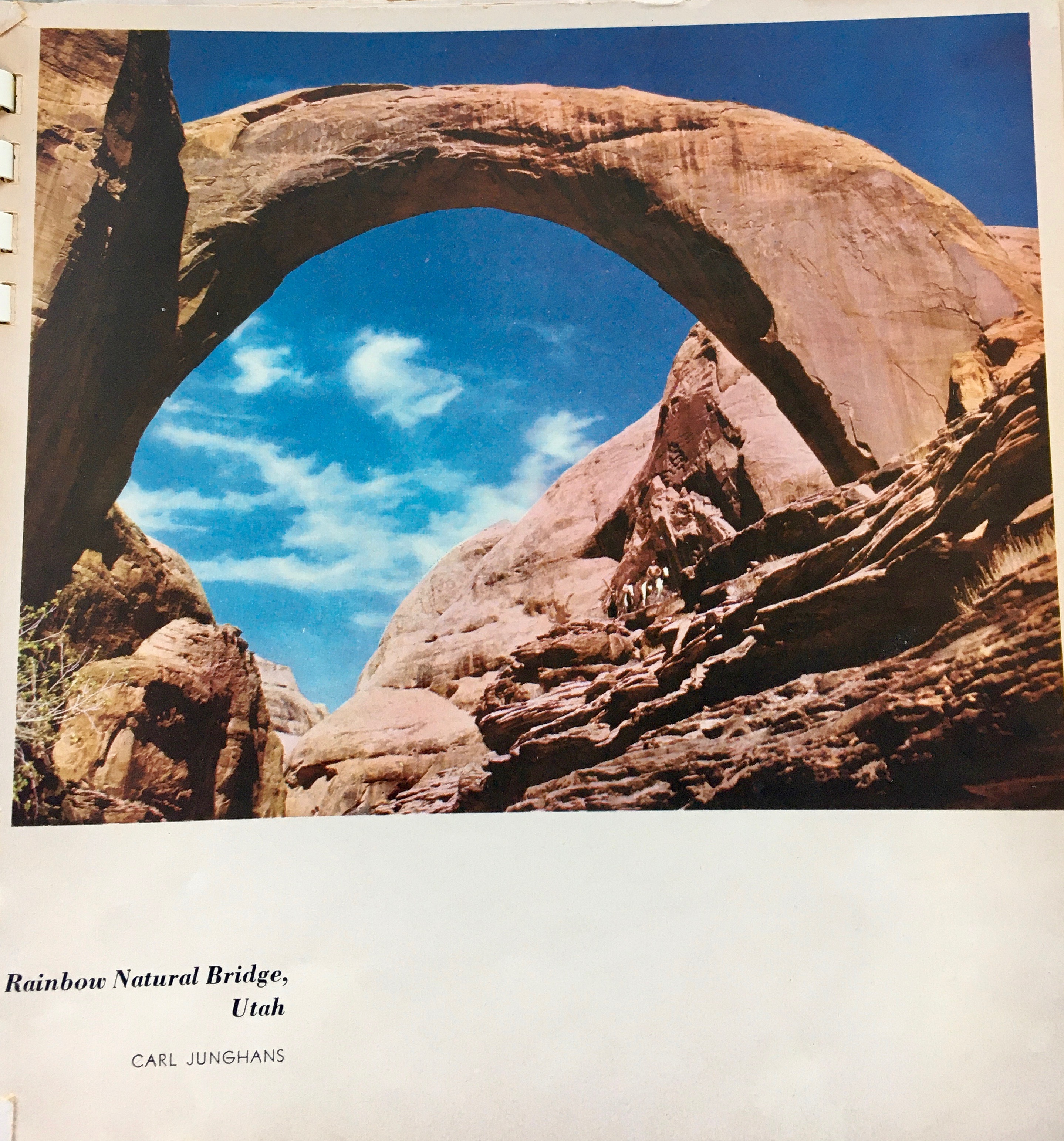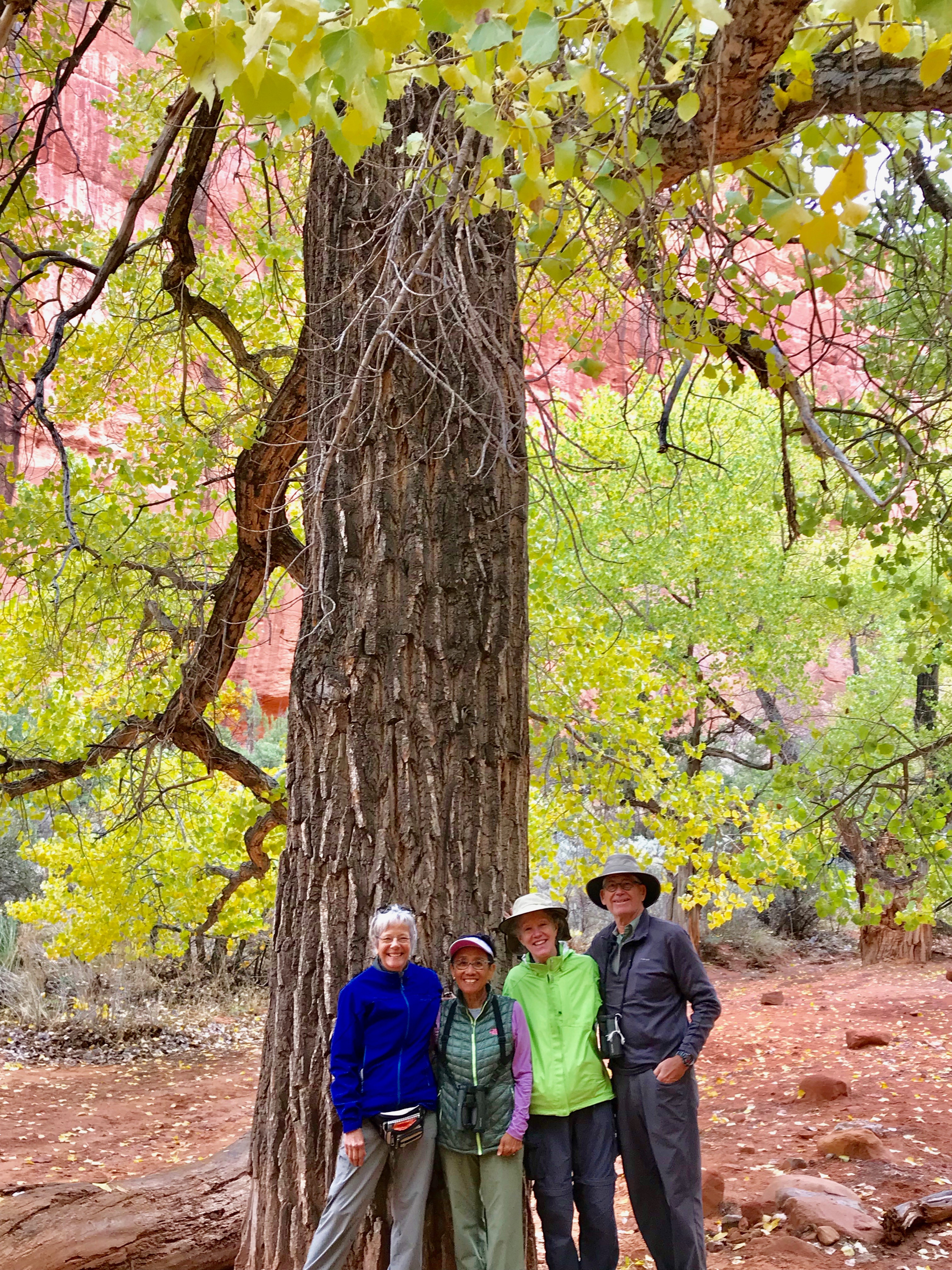Got COVID cabin fever? Me too!
When I fantasize about open spaces and freedom of movement, my mind always travels to the American West. This is not unusual. Traveling west to get away from entanglements has been a staple of the American narrative since before the United States was a country. “Go West, young man,” advised newspaperman Horace Greeley in the mid-1800s.
This is the story of how a Chinese immigrant girl who lived in St. Louis in the 1950s came to discover the American West in a most unusual way. That girl, of course, was me.

In those days of three TV channels, I saw the West flash by in black-and-white episodes of the Lone Ranger, Zorro and Annie Oakley. Then, The Glory of Our West, a slim book of spectacular color photographs and lyrical descriptions of noteworthy places in the West, miraculously fell into my hands.
My transition to becoming an American was bumpy: speaking English, getting along with classmates, learning American traditions. What the heck was Valentine’s Day and why would anyone decorate a shoebox? In a way, I was as trapped in my life then as I am now in my house. My horizons were claustrophobic.
I was twelve. I had been in America about four years. On a fall day, instead of going home after Mass, Dad drove Mom, my sister and me to an unfamiliar house. It had a curved driveway. Inside was the most elegant home I had ever seen. I was enchanted by the numbers of rooms and couches, the built-in book cases, the curved bannisters. The back door led to a gently rolling lawn with sunlight dancing off the leaves of large shade trees.
I never met the owners. There were just clusters of people milling around. My dad said that I could take whatever I wanted. Stunned, a part of me considered grabbing everything in sight like some crazed game-show contestant. But the well-brought up, self-doubting, Chinese grade-school girl in me wondered if I even heard him correctly. (Just a few years ago, I found out that this afternoon event was an early version of “downsizing” by a pair of elderly sisters who were moving out of state.)
I walked around, picking up a trinket here, inspecting a doodad there. One object I took was a set of pick-up sticks just like the ones I had to leave behind in Hong Kong. Then I decided on a book. On a shelf, I found The Glory of Our West.
In the book were one-page essays about Western landmarks: national parks, among them Yosemite, Rocky Mountain National Park, Mesa Verde, Glacier, the Grand Canyon, Bryce and Zion, Big Bend, Olympic, Yellowstone; mountains such as Pike’s Peak, Mount St. Helens, Mt. Rainier, Shasta; lakes like Tahoe, Crater, Pyramid, Snowmass; and a few manmade structures, including Mission Santa Barbara and the Mormon Temple.

Opposite each essay was a photograph in blazing color. Azure skies. Cobalt expanses of water. Snow gleaming like icing on mountaintops. Red mesas, golden rock spires, adobe-colored stone arches, gray granite cliffs. Brooding dark pines, flaming aspens in autumn, emerald giants of saguaros, pink prickly pear blossoms.

I read and re-read these little gems of description so much that my book is worn and torn. Also, it’s almost seventy years old! (Doubleday, 1952.) The essays were more than an escape from my daily grind. I learned geological and historical facts, Indian lore, botanical details, and even a bit about fishing and skiing. With the turn of each page, a new vista opened to me.

I also learned about good writing, sort of by osmosis. The piece on Point Lobos began, “Point Lobos means Point of Wolves, but it was not the gray robbers of the forest that the Spaniards had in mind, but what they called sea-wolves—lobos marinos. We call them sea-lions, or seals.”
Those words were penned by Robinson Jeffers. Other authors include MKF Fisher, Ernie Pyle, Erle Stanley Gardner, Bernard DeVoto and J.B. Priestley. At the time I knew nothing about their fame or their craft. The photographers were equally well known: Ansel Adams shot about a third of the photos. Esther Henderson and Josef Muench were associated with Arizona Highways.
In the intervening years, I have seen the places covered in the book and many others. I have climbed the Chisos Mountains in Big Bend National Park. I have witnessed an aerial battle between an eagle and an osprey above the Snake River in the Tetons. Bill and I listened to classical music in Temple Square. On a lightning-streaked evening, we watched hundreds of thousands of bats swarm out of a cave entrance at Carlsbad Cavern.
One of our favorite places is the Point Lobos that Robinson Jeffers wrote about. It is a jut of rocky granite battered by the Pacific Ocean. It is dotted with storm-twisted Monterey cypresses and is home to deer, sea otters, cormorants – and yes, sea lions.
The Glory of Our West was written at a “bigger is better” moment in United States history. There are some notable problems for today’s readers. Native Americans are seen more as relics of the past than people who still live and work in those lands.
Ecologically, some of the authors’ assumptions seem naïve. Nature is endlessly bountiful and will always renew itself, even if you divert river waters for farm irrigation, even if you keep cutting down old-growth forests for fuel, furniture, paper, even toothpicks. Glaciers move at a “glacial pace,” not disappear within human lifetimes due to global warming. Trout species are transplanted to please fishermen without considering the endangerment of native species.
One sentiment, however, has remained true. In the beauty of the wilderness, in the towering heights of mountains, in the quiet of deserts, in the brilliance of the night sky, our troubles are small.

J.B. Priestley put it this way: “It is years now since on that perfect morning I stared and wondered and worshipped, alone beneath that shining arch; and much has happened since, some of it terrible and heartbreaking; but I have only to be quiet and still and wait—and then I am at Rainbow Bridge again, deep in its silent magic.”
Remembering gazing into the chasm of the Grand Canyon, hoping someday to see into the depths of Crater Lake and knowing that trees I’ve touched have lived hundreds of years — these all make being stuck at home for a virus seem bearable.

Tell me: Is there a place you always go back to in your mind? Why?
6 replies on “Purple Mountains Majesty _ As Seen from the Hoosegow”
[…] are a reflection of my Plague Year hopes and fears. The spring abounded in existential dread and longing for normal. Summer focused on historical and current issues of racial justice. Fall and winter were a frenzy […]
LikeLike
Grinnell claimed that Greeley spoke it to him. Greeley denied it. 🤷♀️
LikeLike
Who was the “young man” that was the recipient of Horace Greeley’s directive,
Go west young man! ? Was it John Grinnell?
LikeLike
Your writing reminds me of 15 national parks we have visited. (We have a long way to go before visiting all 62 national parks!) Among the best is The Yosemite with its uniquely formed falls and landscapes that never failed to mesmerize us. We also loved Point of Lobos State Natural Reserve, but wished that we could have visited it during spring when we would have a chance to observe more birds. Nowadays, Viking.tv site takes us to different parts of the world!
LikeLike
Happy and sad for you, Roger. 💕
LikeLike
An unfortunate feature of widowhood is that recall of great experiences are overshadowed by feelings of loss. With time, however, some of the clouds recede and bits of sunlight shine through. Ten years ago, upon turning 70, I was able to check off a couple items on my bucket list. We spent a glorious couple weeks exploring Costa Rica. Later that summer, I rode my motorcycle up Pikes Peak (Li drove a rental car) and we had a good time noodling around Estes Park. Fond memories of happier times.
LikeLiked by 1 person